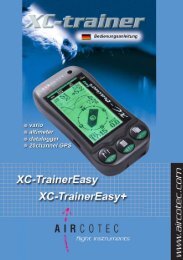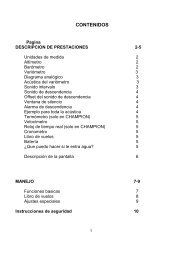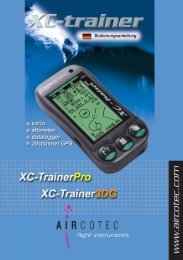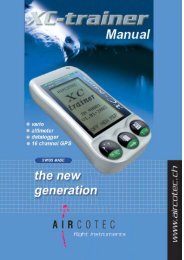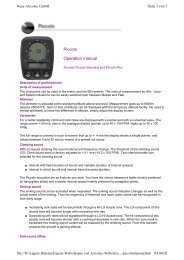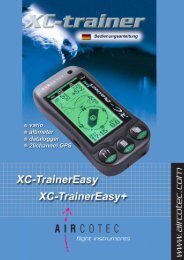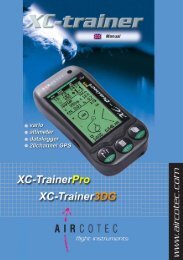You also want an ePaper? Increase the reach of your titles
YUMPU automatically turns print PDFs into web optimized ePapers that Google loves.
Manual V1.00_2009_V58.5 Thermal flying Mode8.5.1 Wind distribution curveThe wind distribution curve only becomes visible in the display once the pilot has flown atleast a full circle, or a figure-eight. The instrument uses the SOG to calculate wind speedand –direction.8.5.1 Basic Wind distribution curveA thin vertical bar shows the compass direction stillneeded to calculate the wind direction. Fly in thisdirection to acquire the data needed.This line shows a compass that has been ‘opened up’. North is in the middle.'S--W--N--E--S'.8.6.2 Active Wind distribution curveThe wind curve is really a speed distribution curve. Itgives the average ground speed to be expected whengliding in any direction.Two thin lines intersecting the curve indicate Upwind /Downwind.The little lines crossing the thin lines indicate the meanTrue Air Speed (TAS), in this image app. 55km/hSOG-bar:The bar height is used to indicate the current Speed Over Ground (SOG), and the bar sitson the compass rose at the position of the current heading (COG – Course Over Ground)Scale:The full height of the coordinate system corresponds to 100km/h. Where the curve touchesthe bottom line the SOG is 0km/h, where it touches the top it is 100km/h SOG.In this example, flying NW will give a SOG of app. 75km/h (tailwind) whereas flying SO(headwind) will give 25km/HPage 22




